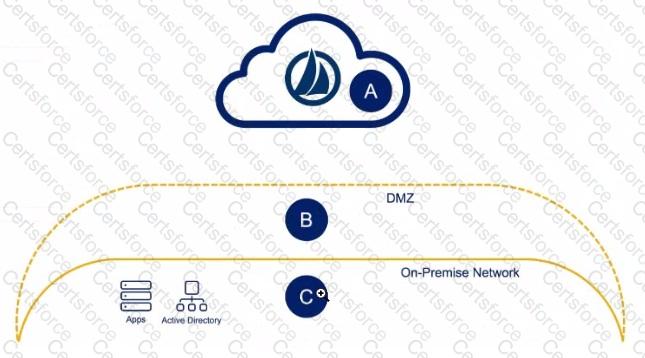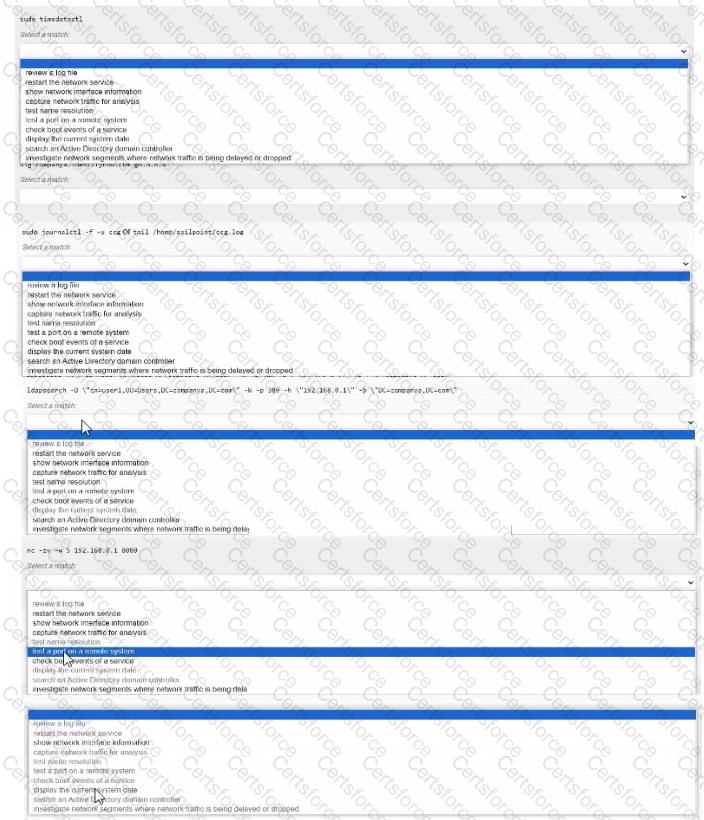Exhibit.

Solution: An engineer has one small production data center with an Active Directory, a database server, and two cloud applications to which they need to connect Where would the virtual appliances (VAs) reside In this scenario?
Solution: B
Does this example accurately describe an IdentityNow data flow?
Solution:
1. The IdentityNow engineer logs into the virtual appliance and creates a new identity profile.
2. The virtual appliance contacts the IdentityNow tenant to synchronize the identity profile.
3. The IdentityNow tenant provisions accounts to source systems.
4. The IdentityNow tenant sends an API call to the virtual appliance with confirmation that accounts were provisioned
Does this run on the VA?
Solution: Active Directory connector
In an optimized aggregation, if an account is unchanged since the last aggregation, does this step execute?
Solution: The virtual appliance connects to the target system to retrieve accounts.
Is this an item that an IdentityNow engineer should configure when implementing a source that uses a JDBC connector?
Solution: This item is complete
Is this statement true about the purpose of a tenant?
Solution: All customers are allowed a maximum of one non-production tenant.
Is this statement accurate regarding SailPoint's multi-tenant processing environment?
Solution: Updates are rolled out on a continuous basis, which allows for rapid development and deployment of new features, security updates, and bug fixes.
Is the following true about custom connectors in IdentityNow?
Solution: Custom connector configurations can have account correlation settings defined.
Match each Virtual Appliance command to Its purpose.

An IdentityNow engineer needs to find identities with disabled AD accounts by using IdentityNow's search features. Is this the correct search syntax to perform this task?
Solution:
